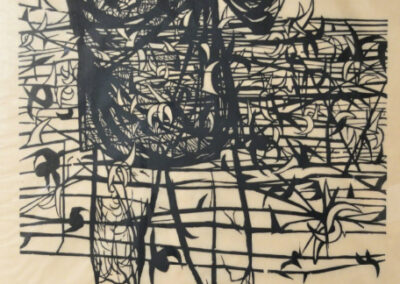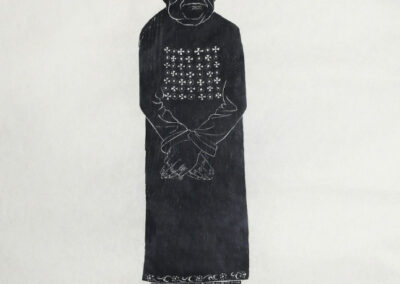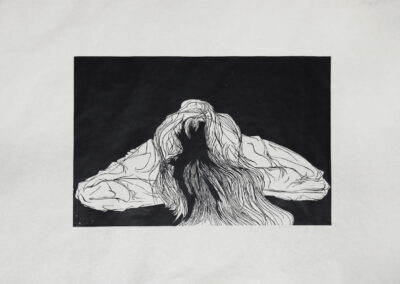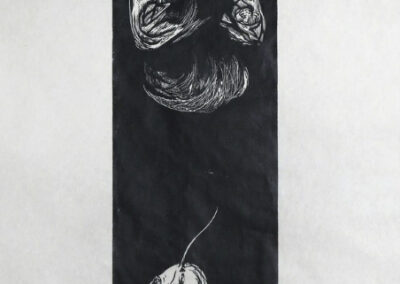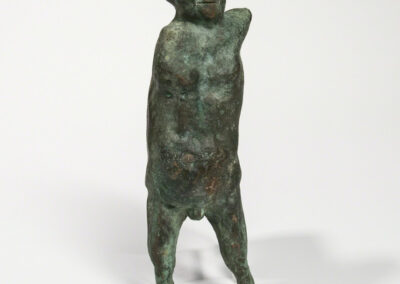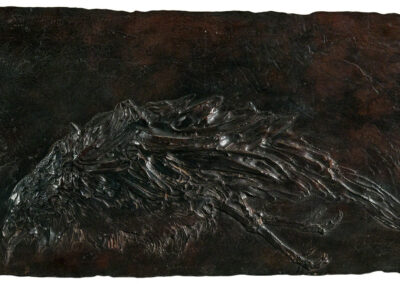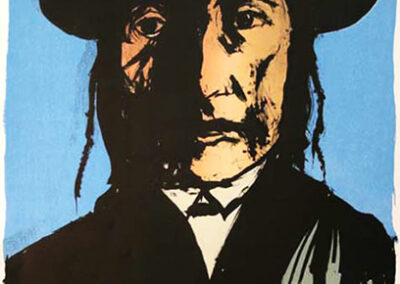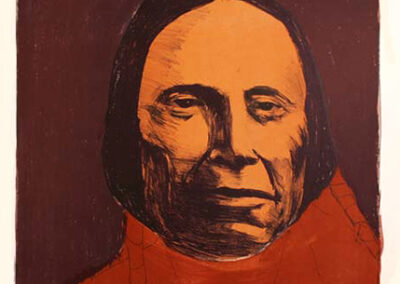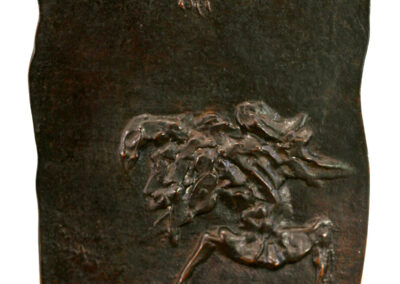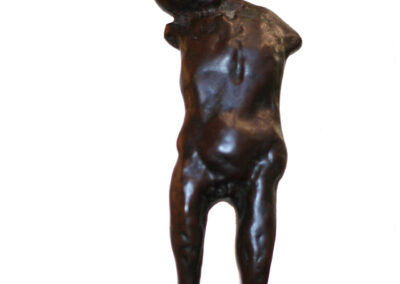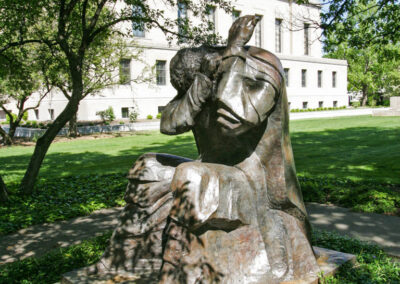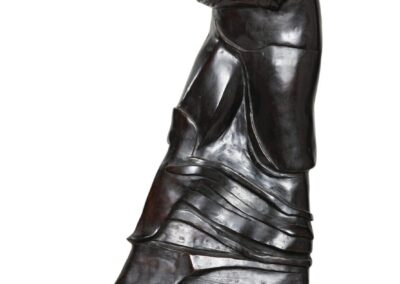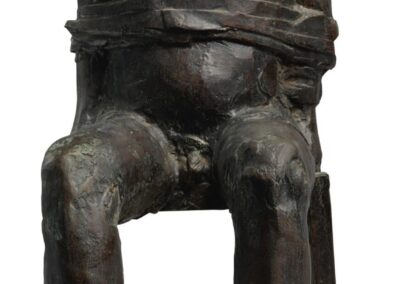Our latest Artist You Need To Know is Leonard Baskin (August 15, 1922 – June 3, 2000). A prize-winning sculptor, draughtsman and graphic artist, Baskin was also the founder of the Gehenna Press (1942–2000). His work in woodcuts and lithography was some of the finest of his generation.
Gehenna Press was “one of the most important and comprehensive art presses of the world, which produced editions of the works of Sylvia Plath (who famously dedicated her poem titled Sculptor to Baskin), Ted Hughes (specifically the collection Crow), Anthony Hecht, and James Baldwin that paired beautifully with the often stark, striking prints by Baskin. Naming his print endeavour ‘Gehenna’ is a nod to how many of Baskin’s works explored Christian religious themes. His large-scale woodblock prints could be both realistic as well as more surreal, yet often were peopled by figures somewhat grotesque, populated by characters that were chimeras of humans and animals.
-
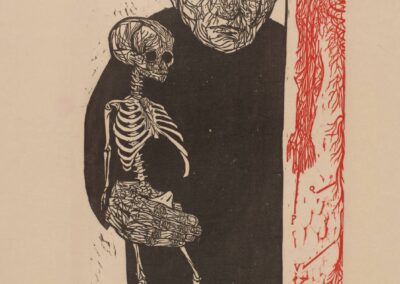
The Anatomist, 1952
-

Man of Peace, 1952
-

Noah, 1975
-

Custos Morum, ca. 1950
-

Dierdre, circa 1950
-

Old Man and Dog, ca. 1970
The New York Times, in speaking about Baskin’s work, called him a “Sculptor of Stark Memorials.” He worked in wood, limestone and bronze. One of his more famous large scale bronze sculptures, The Funeral Cortege, greets visitors to the Franklin Delano Roosevelt Memorial in Washington, D.C, and he also created the Holocaust Memorial in Ann Arbor, MI. Baskin often spoke of himself as more a sculptor than a printmaker, and many of his prints and drawings were often preliminary studies for his three dimensional work.
-

Dead Man, n.d.
-

Untitled, 1999
-

Plate VI [Torso and Head] from Ars Anatomica, 1972
-

Dead Crow (Horizontal Bird), n.d.
-

Magpie Eagle Feathers, 1993
-

Red Cloud, 1975
Born on August 12, 1922 in New Brunswick, NJ, Baskin went on to study at the Yale University School of Fine Arts. He later moved with his family to Devon, United Kingdom. Baskin’s work is held by major museums worldwide, including the Art Institute of Chicago, the Art Museum of Southeast Texas, Boca Raton Museum of Art, the British Museum, Brooklyn Museum, Detroit Institute of Arts, Hirshhorn Museum and Sculpture Garden, the Honolulu Museum of Art, Indianapolis Museum of Art, the Jewish Museum, the Library of Congress, Metropolitan Museum of Art, MOMA, Museum of Fine Arts, Boston, the National Gallery of Art, Seattle Art Museum, Smithsonian American Art Museum, the Udinotti Museum of Figurative Art, Victoria and Albert Museum, the Vatican Museums, Whitney Museum of American Art, and the Worcester Art Museum.
-

Seated Fat Man, 1956
-

Caprice, n.d.
-

Ruth and Naomi, 1979
-

Standing Crow
-

Hanged Man, 1956
-

Holocaust Memorial, 1994, Ann Arbor, Michigan
Baskin’s significance as a printmaker is also clear in that his archive from the Gehenna Press is in the collection of the Bodleian Library at Oxford, England (acquired in 2009). They have a “catalogue raisonné of Baskin’s graphic works [which] includes 739 works.” The McMaster Museum of Art in Hamilton, Ontario has over 200 of Baskin’s prints and the Philadelphia Museum of Art has a collection of over 800 pieces.
Many of his works were illustrative of not just contemporary writers, but also larger themes such as Judaica and Dante’s Divine Comedy. Another recurring trope in his work is his interest in Native Americans (ignited by an invitation to illustrate what was the then called Custer National Park, and now called Little Big-Horn National Park). Several years ago, in an exhibition at the previously mentioned McMaster Museum of Art, Baskin’s works in this series were displayed in tandem with a previously featured Artist You Need To Know, Fritz Scholder
Much more of Leonard Baskin’s work can be enjoyed here.

